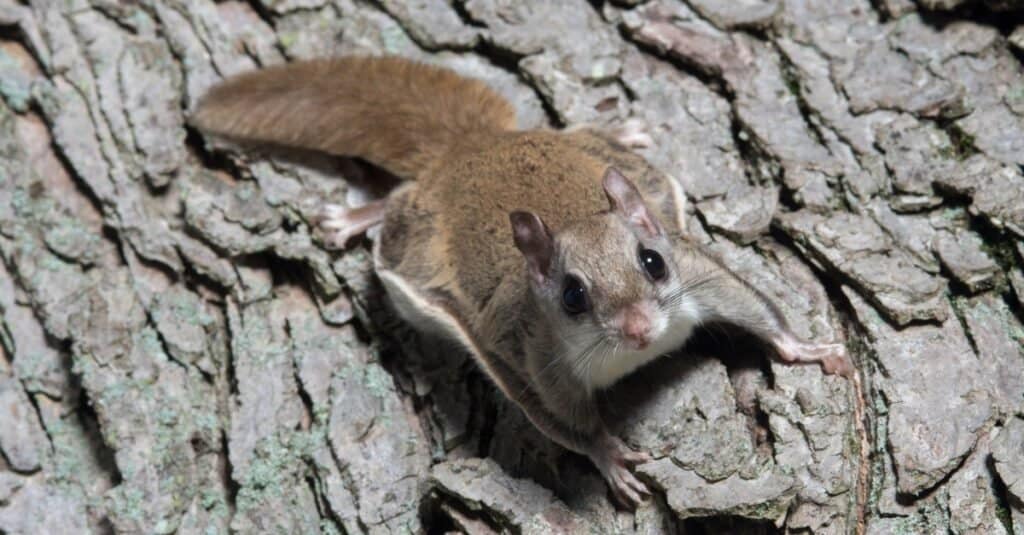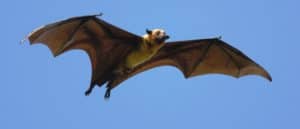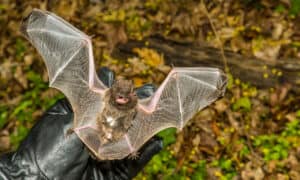Bats are found in every part of the world. These winged, nocturnal navigators have inspired many legends and myths. Few animals in the world have been as misunderstood and maligned as bats, but they are harmless and even beneficial creatures.
The typical Little Brown Bat eats thousands of mosquitoes, midges, and flies every night. Contrary to popular belief, bats are not blind. However, their vision is poor and they rely mostly on echolocation to identify prey and navigation. Their evil reputation is probably caused by their seeming ability to navigate without sight, their nocturnal ways, and their strange, leathery wings. Are they birds, or are they flying rats?
Bats are mammals. They fit every characteristic required to be classed as a mammal. Here’s a closer look at these fascinating animals.
What Is a Mammal?
To be classed as a mammal, an animal must have these characteristics.
- Vertebra: Animals have a vertebra, which is also known as a backbone. It’s what allows a mammal to stand straight on its own feet.
- Live birth: Mammals give live birth.
- Endothermic system: Mammals are endothermic, which means they can regulate their body temperature according to their environment. The other term for this is “warm-blooded.”
- Hair or fur: All mammals have fur or hair covering their skin. Some marine mammals don’t have fur because it would interfere with their ability to swim. Over centuries of evolution, they have lost their fur.
- Milk: All female mammals nurse their young.
- Social behavior: Mammals usually have more complex societies than other species. They can communicate with each other and form social groups.
- Lungs: Mammals breathe with their lungs.

©Independent birds/Shutterstock.com
Are There Different Types of Mammals?
Most mammals fall into one of three categories.
Placental mammals: A placental mammal gives birth to live offspring. Elephants, bats, and humans are all placental mammals. The baby forms in the mother’s body and emerges once it is fully developed.
Marsupials: Their babies are only partially developed at birth. The babies continue growing while living in their mothers’ pouches. Opossums and kangaroos are marsupials.
Monotremes: Every rule has exceptions, and monotremes are the exception to the rules about mammals. The platypus and the echidna are warm-blooded, fur-bearing vertebrates, but they lay eggs. Monotremes nurse their young, however, so they are classed as mammals.
How Do Bats Compare?
- Vertebra: A bat has a vertebra.
- Live birth: Female bats give birth to live babies. Typically, a bat has one baby a year.
- Endothermic system: Bats are warm-blooded animals.
- Hair or fur: All bats are covered in thick, fuzzy fur.
- Mammary glands: A mother bat nurses its baby for up to six months.
- Social behavior: Bats roost in colonies and have other signs of complex social interaction. They also communicate with each other. Male bats, for instance, sing a mating song to attract females.
- Lungs: Bats breathe with their lungs.
As you can see, bats are clearly mammals.
Are There Any Other Flying Mammals?

©iStock.com/EEI_Tony
There are other winged mammals, but bats are the only mammal that performs sustained flying like that of a bird. Other winged mammals can only glide for short distances.
Petaurus: These tree-dwelling marsupials are native to Australia and New Guinea. With their huge eyes and striped heads, they look like tiny flying chipmunks. They can glide up to 100 feet.
Colugo: This nocturnal animal is native to Southeast Asia. It is one of the largest flying mammal species. Colugos are sometimes known as flying lemurs, although they are not members of the lemur family. They can glide over 200 feet.
Flying squirrel: There are more than 40 species of flying squirrel. Found all over the world, these small mammals have a cartilage spur that opens into wings. They use their tails as parachutes to help them land when they glide.
Feathertail glider: This tiny glider looks like a darkly colored mouse. Small enough to fit in a human palm, it has a long tail that it uses for balance as it glides. The feathertail glider is native to Australia.
How Bats Are Classified
Bats fall into one of two taxa or groups. The Microchiroptera group includes the small bats common to most places. Also known as microbats, they live everywhere on earth except the Arctic. These bats have long tails and small faces with short snouts. They use high-frequency echoes to navigate.
The second group, Megachiroptera, includes the large bats that live in Australia, Asia, Africa, and India. Also called fruit bats or flying foxes, their wingspans can be 5 feet or more. Flying foxes have short tails and long snouts. Unlike microbats, they navigate by sight and hearing.
Up Next…
- Little Brown Bat These are the most common bats, click here to find out more about them.
- Cutest Bat: Which Bat Species is The Cutest in The World? Yes, bats are cute! Check out some of the cutest bats around.
- Bat Predators: What Eats Bats? Bats eat insects, but does anything eat bats? Find out here.
The photo featured at the top of this post is © Rudmer Zwerver/Shutterstock.com
FAQs (Frequently Asked Questions)
Are bats rodents?
Some people think bats are rodents, but they’re not. Their small, furry bodies might make you think of a winged mouse, but they have no relation to the rodent family, which includes mice and squirrels.
Do vampire bats suck human blood?
Vampire bats don’t drink human blood. Although they might appear menacing in horror movies, these bats are shy and secretive. They are native to South and Central America, and they prefer to live in dark caves.
Vampire bats evolved millions of years ago. Scientists are not sure how they developed a taste for blood, but one theory is that they once fed on insects found in the wounds of animals. Over time, they developed the ability to drink the blood from those wounds.
There are three species of vampire bats. The common vampire bat (Desmodus rotundus) is the most frequently seen vampire bat. It mostly feeds on mammal blood. The hairy-legged vampire bat (Diphylla ecaudata) and the white-winged vampire bat (Diaemus youngi) feed mostly on bird blood. All three also eat insects, fruits, and pollen.
Do bats carry rabies?
A small percentage of bats carry rabies. Transmission of rabies from bats to humans is extremely rare. If a bat has bitten you, it’s important to see a doctor.
Thank you for reading! Have some feedback for us? Contact the AZ Animals editorial team.






